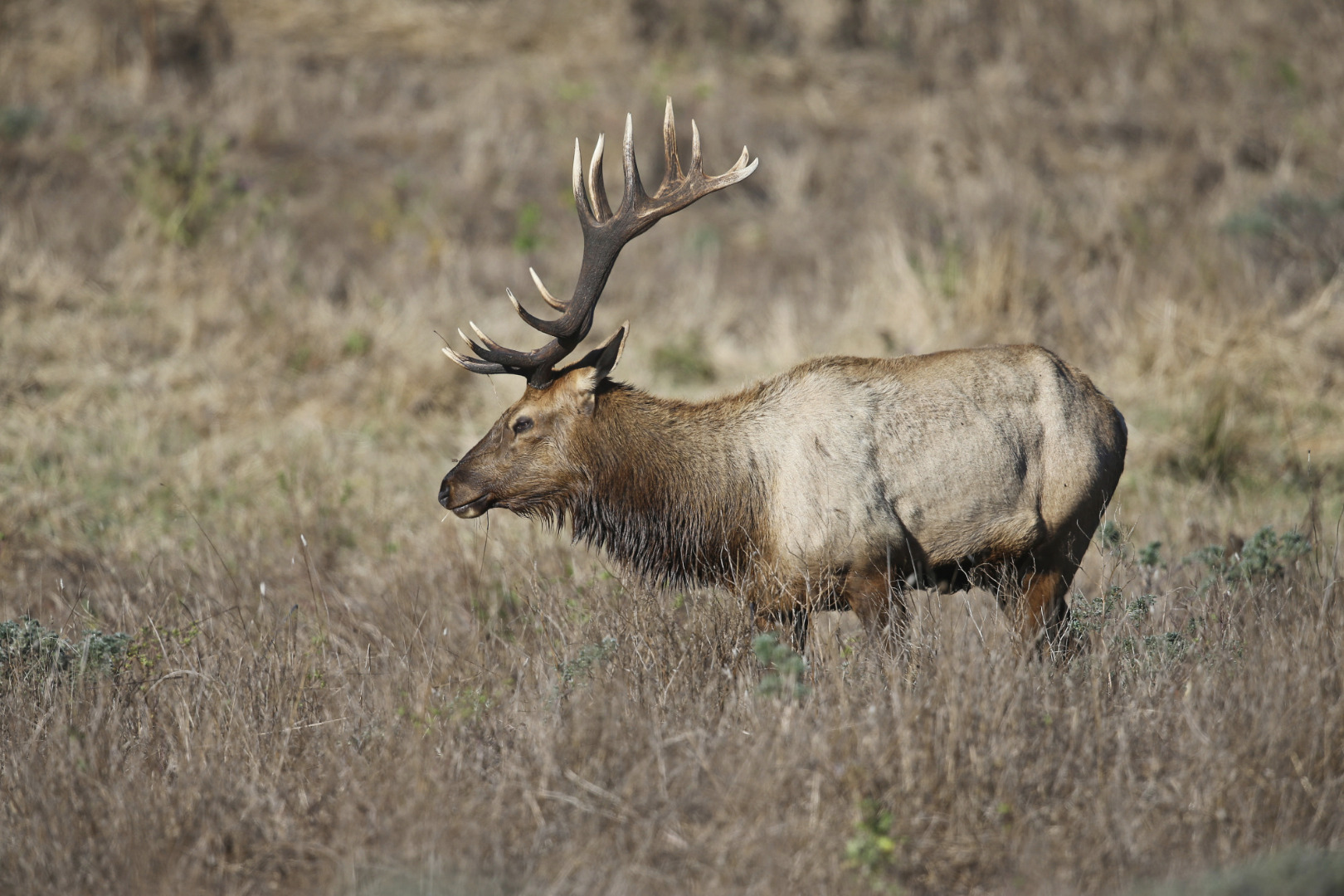How are antlers different from horns and pronghorns?

by California Department of Fish & Wildlife
2-25-2021
Website
ANTLERS VS. HORNS
Q: How are antlers different from horns and pronghorns in ungulate species like deer, elk and bighorn sheep?
A: California is home to ungulate species that have antlers, horns and pronghorns. Deer and elk have antlers, which are made of bone and grow from pedicels, bony supporting structures that develop in the lateral region of an ungulate’s frontal bones (on the top bones of the skull). Antlers are deciduous which means they shed every year. For most ungulate species, only males grow antlers and typically not until after their first year of life. However, female caribou and caribou calves do grow antlers. Horns are made of bony core covered in keratin, a structural protein that can be likened to fingernails. Horns occur in bighorn sheep and grow continuously through an animal’s life. Scientists can generally count growth rings on horns of males to determine an animal’s age, but aging females from horn rings is far less reliable. There are also several herds of pronghorn antelope in California, including on the Carrizo Plain in San Luis Obispo County and throughout northeastern California. Pronghorns are comprised of a sheath that grows over a bony core. Pronghorn sheaths are deciduous and shed yearly like antlers.
More Reports

2-25-2021
At the annual Salmon Information Meeting held virtually today, state and federal fishery scientists presented estimates of catch in 2020...... Read More

2-19-2021
As part of a broader effort to go paperless, the California Department of Fish and Wildlife (CDFW) is transitioning to...... Read More
